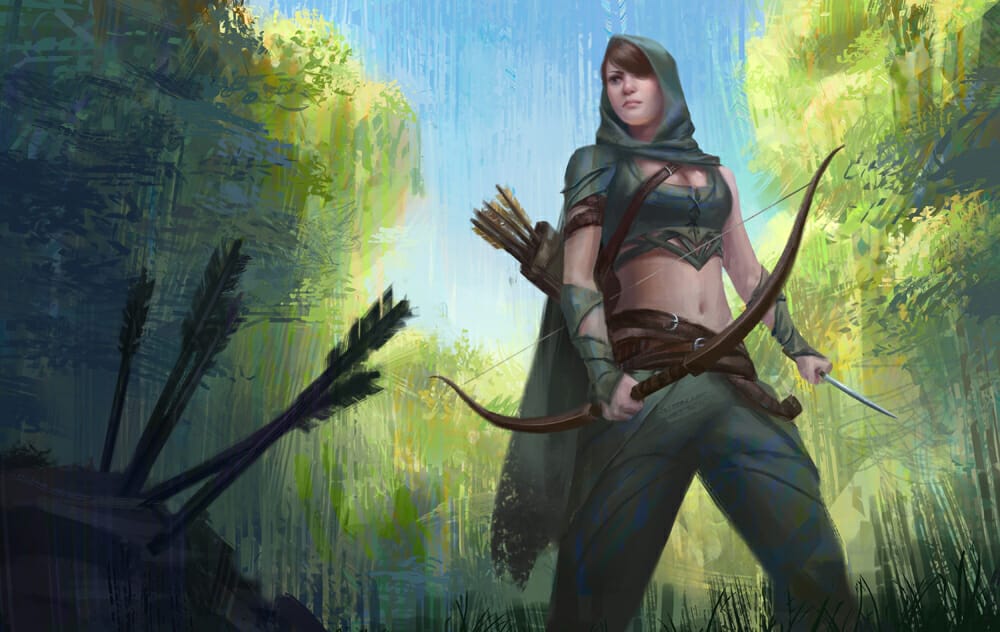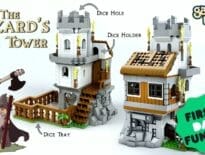I love combat. Love it.

I think I lot of players in my game assume that I’m a deep RP DM because I do vocal NPC characters and put things in front of characters they have to emotionally deal with.
But truth is, I love describing an ongoing combat. The clash of weapons, the thudding of bodies into each other, the split second moments where it can get totally out of hand, the variations of wounds. When combat works, I just…disappear into it.
I’m not thinking about anything but how these next few seconds are going and if those involved are going to survive. It’s thrilling, and I can see why the combat pillar has been part of the roleplaying games since the start – it’s where you can push a game to the extremes of choice – kill or be killed.
As we’re specifically discussing D&D in this article series, let’s agree that combat pillar is undoubtedly the most supported part of D&D.
There’s no point in assuming otherwise, it has always been a focus of the game identity.
But yet, despite this support, there are people out there who still hate it. The most likely place for players to lose interest is during a combat. The most recent edition seems to try to cut this off by shortening combat times, making them feel a bit more breakneck but not so monotonous.
Which has had limited effect – lots of people still say they think combat is boring and the part they enjoy least about the game.
I think to some there’s a lot to be discussed here. Let’s break it down, attack it a little bit at a time. Flank the problem, so to speak.
Underpowered Thrust
I have said above, I love combat. People are probably going to kick back at me because of this, but I feel the most recent edition of D&D oversimplifies the whole process.
This is understandable, it appeals to a broader core audience and allows for a bit more free-flowing combat. But sometimes, I look at the game and think that we are missing a trick.
Imagine for a minute that the system cared about placement more, punished players for making bad tactical decisions and had foes that you had to work out how to defeat rather than just throw damage at? That you had to learn the specific tactics that work for your party makeup or perish?
That’s kind of my experience of third edition, which is where some of my love for combat came from.
I had to learn on the fly, adapt my tactics to the foe. My brain felt like it was working out. While this is present in Fifth, I don’t feel it’s as deep or as honed as lots of other games out there.
As combat becomes more vestigial, fewer people are engaging with it. The experience rewards us less for making choices. It’s up to the DM to make a combat interesting with other tools.
Every encounter I ever plan for D&D is going to have a step where I am like ‘how do I make this battle for life and death seem engaging?’.
I literally never have this feeling in any other game I run. Those games are so busy presenting players with problems to solve during combats, they don’t have time to breathe. So what can we do?

The Taskmaster Solution
For those of you not Marvel comics nerds, Taskmaster is a villain who can copy the fighting styles of other heroes. He watches his targets on recordings, and his reflexes learn their moves, so he is often a step ahead.
We need to look around at other games and see what we can learn because the combat pillar is present in 95% of RPGs. Here’s some ideas.
Mix The Narrative In: PBTA games that feature combat are often more concerned with the outcomes of the combat.
In Masks, damage will inflict an emotional condition on a character. Translating that, if we stop viewing pillars as separate, we can make combats personal.
Imagine a moment where you shift the mood during a combat, dropping a revelation about someone’s loyalties mid-initiative? Or how about exploration? A fight in a tomb where players are breaking into parts of the area while engaged in combat, every step destroying rickety floors or walls and uncovering space?
My advice would be to treat combat as an extension of a narrative, done only to raise the threat, uncover something, deliver a satisfying conclusion or clarify that an area is dangerous.
Don’t separate combat from everything else, then people will pay attention.
Every Attack Is A Choice: In the World Of Darkness games I grew up with, every combat move was a choice. Kick or Punch? Bite? Body Slam?
While the game wasn’t supposed to be about combat, the system felt crunchy and violent and was really codified. It gave games a blow-by-blow focus, each hit resounding and giving players some control.
It’s important for a combat to feel like it still has narrative weight , give players choices about attacks and have NPCs and creatures do inventive things.
In one game, I had an NPC enemy use a parry ability. Rather than just saying he parried, I said he aimed a kick at his opponent’s knee, unbalancing the incoming blow and sending them sprawling and rolling to regain ground. The players looked at each other like this enemy was unlike anything they’d faced before.
Think about how each attack lands and how that alters the battle.
Either Lean In…: Everyone who has been curious about gaming eventually tries Shadowrun. Since the influx of new RPG players, I have watched the cycle of people wanting to try Shadowrun then putting it down because it’s too complicated.
While some editions of the game are more broken than others, some of it is also to do with the low level of technicality we’ve become used in D&D. But I’ve been in Shadowrun games that worked. If you’re committed to tracking where everyone is, weapon selection and application, it can be thrilling and a very intense experience.
The same is true of D&D. If you have a party who has an obsession about tactics, lean into ways to make the game more complex, difficult game. It might awaken players who before had no investment.

Or Lean Out: Battlemats. I have a love/hate relationship with them. They give people an idea of where everything is. But they also restrict thinking, blocking possibility.
A lot of other games assume theatre of the mind, and I think if you’ve never tried it, you should. Giving players a chance to imagine the location you are fighting in without looking at a board can be enough to change the game – people who can’t just ‘move thirty feet’ have to think about how they move through an environment.
If you don’t feel comfortable with this, instead make sure you have some extra stuff to put on your battlemat, things players can move and interact with that aren’t monsters. That gives them an ‘in’ to viewing the environment as a resource for storytelling.
Right, that’s the easy one out the way. Next time, we’re going to plunge into the realm of social interaction. Given how many players/DM have differing opinions on that one, imagine I’m going to be failing my skill check.
Creative Commons credit: Draenei Paladin – WoW Fan art by Morxx, Shadowrun Characters by David Sondered, Target Down by NathanParkArt.
Find out what Geek Native readers say about this in the comments below. You're welcome to add your own.

